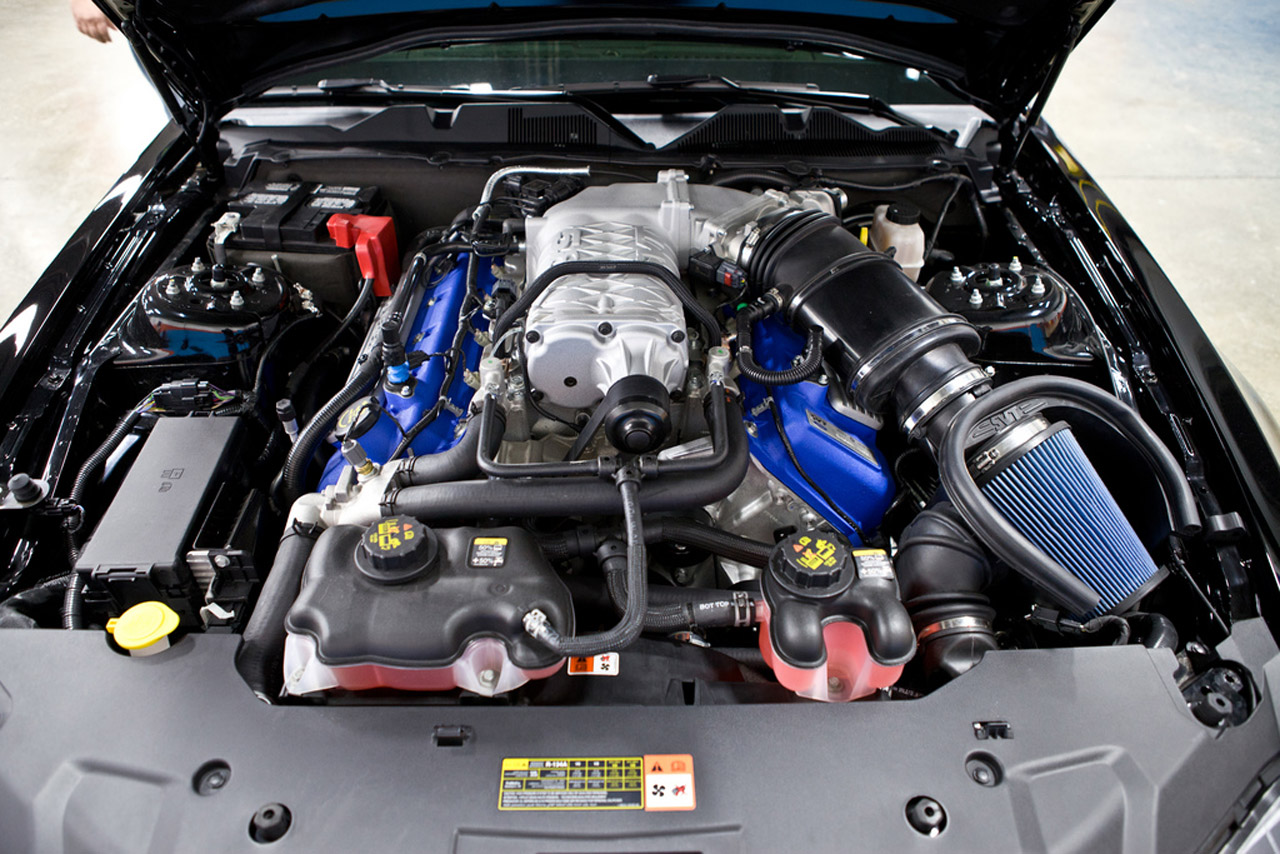2013 Mustang Engine Information – 351 cubic inch V-8 (5.8 L Trinity V8)
The GT500 5.8L Trinity
The 2013 Shelby GT500’s 5.8-liter V8 aluminum-block engine produced 662 horsepower and 631 lbs.-ft. of torque, making it the highest-horsepower engine ever produced in North America to date. Nearly every part of the powertrain was optimized for producing the additional horsepower, including a new supercharger, new cross-drilled blocks and heads, an all-forced engine rotating assembly, updated camshaft profiles, upgraded head gaskets, a new carbon fiber driveshaft and upgraded clutch, transmission and axles.
The Details
The biggest news for the 2013 Shelby Mustang GT500 is a substantial increase in power, coming from changes in two areas. First, Ford’s engineers have bored out the all aluminum 5.4 liter engine, which made it’s debut in 2011 to a full 5.8 liter V8. The second source of more power for the 2013 GT500 Mustang is the addition of a new, more efficient Eaton TVS supercharger. The combination of this technology and other incremental improvements and refinements results in the 5.8 liter engine cranking out 662 horsepower and 631 lb/ft of torque through the beefy, externally cooled Tremec TR6060 transmission.
No Subscription? You’re missing out
Get immediate ad-free access to all our premium content.
Get Started



